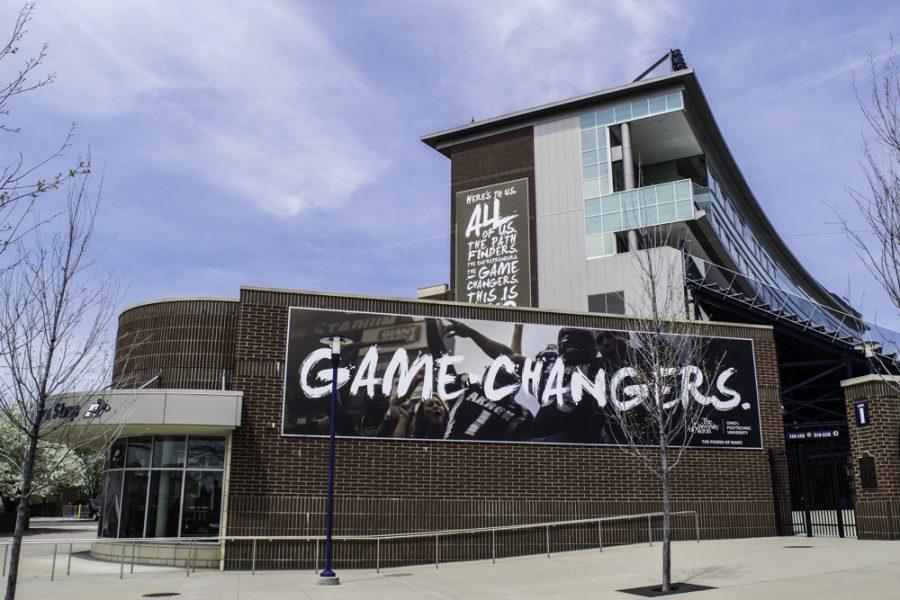The Hunt for School Spirit at The University of Akron
March 2, 2018
If you have spent some time at The University of Akron, you may have noticed that sporting events may not have the highest attendance rates. For instance, in 2016, The Zips, who play at the 30,000-seat InfoCision Stadium had an average of 10,337 attendees according to NCAA’s national college football attendance statistics. In 2017, The Zips had a higher average than several previous years with an attendance of 19,569 people. This was a better attendance average- but it still may not be great to some- especially to those who attribute school spirit with attendance to athletic events.
If University students aren’t going to football games, does that mean the University lacks in school spirit?
Taylor Bennington, the president of the undergraduate student government said that he believes there are a few levels to school spirit. “I think there is a surface level and that’s what you see at football games, basketball games- things that are really easy for people to get involved and connected with.”
On a deeper level, school spirit goes beyond going to sports games, Andrew Barry, the vice president of USG said. He said it can be going to University events, participating in student organizations, and generally working towards the betterment of the University.
One student who shows his school pride through a student organization is Josh Fernandes, who is in Club Soccer. He said that school spirit involves being a leader in the community and setting an example for new students by showing them UA pride. He does this by engaging people and building community by playing soccer.
Dr. Andrew Rancer, a professor in the School of Communications at the University said he believes that school spirit has increased over the past 20 years. He believes this may be due, in part, to the beautification of the physical campus, which includes many new buildings and the renovation of existing buildings and dorms. “School spirit can be enhanced when you are welcomed to a beautiful campus,” he said.
Several formal and informal programs have enhanced UA as well, Dr. Rancer said. One of these programs is the “school colors” Fridays, an initiative that encourages students, faculty and staff to wear blue and gold on Fridays. “I am pleased when I walk around campus and see many, many students wearing t-shirts, hoodies, and sweatshirts bearing the logo, ‘University of Akron,’ ‘Akron,’ and the like,” Rancer said.
School spirit may be apparent at UA, just not in a traditional form of going to sports games. However, there are still obstacles that may be worth acknowledging.
Bennington said that some students don’t feel like they belong at the University, which causes a lack of excitement. “If they don’t feel like they belong to The University of Akron, they’re not going to cheer for our football team. They’re going to cheer for Ohio State because that’s what they’ve always known,” he said.
UA also has a number of commuter students, which may contribute to less camaraderie. Dr. Rancer said UA is a large university located in a city, where students are not necessarily concentrated in a specific location close to campus. It is not uncommon to find students living in a larger geographic area including Cleveland, Medina and Youngstown, he said.
As students live farther away from campus, there are a plethora of other activities that draw attention away from University events, he said. This may not be the case in large universities located in more rural and suburban areas, he said. “Students who attend these universities typically live within a 10-15 mile radius of campus. And, given the more rural nature of these locations, there is typically not a deal of diversions once you leave the town,” he said.
UA expresses school spirit in many ways, one of those may not be attendance at football games. “I think athletic events are an indicative sign of the health of school spirit. That’s why a lot of people turn to how many people we have at football and basketball games, but I don’t think it’s an end-all-be-all,” Bennington said.












